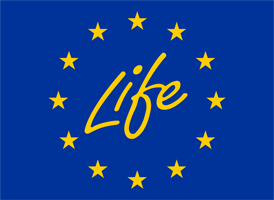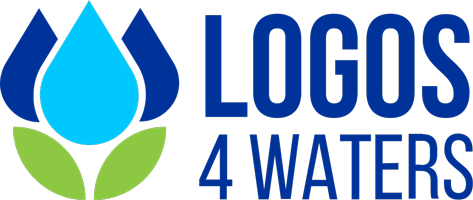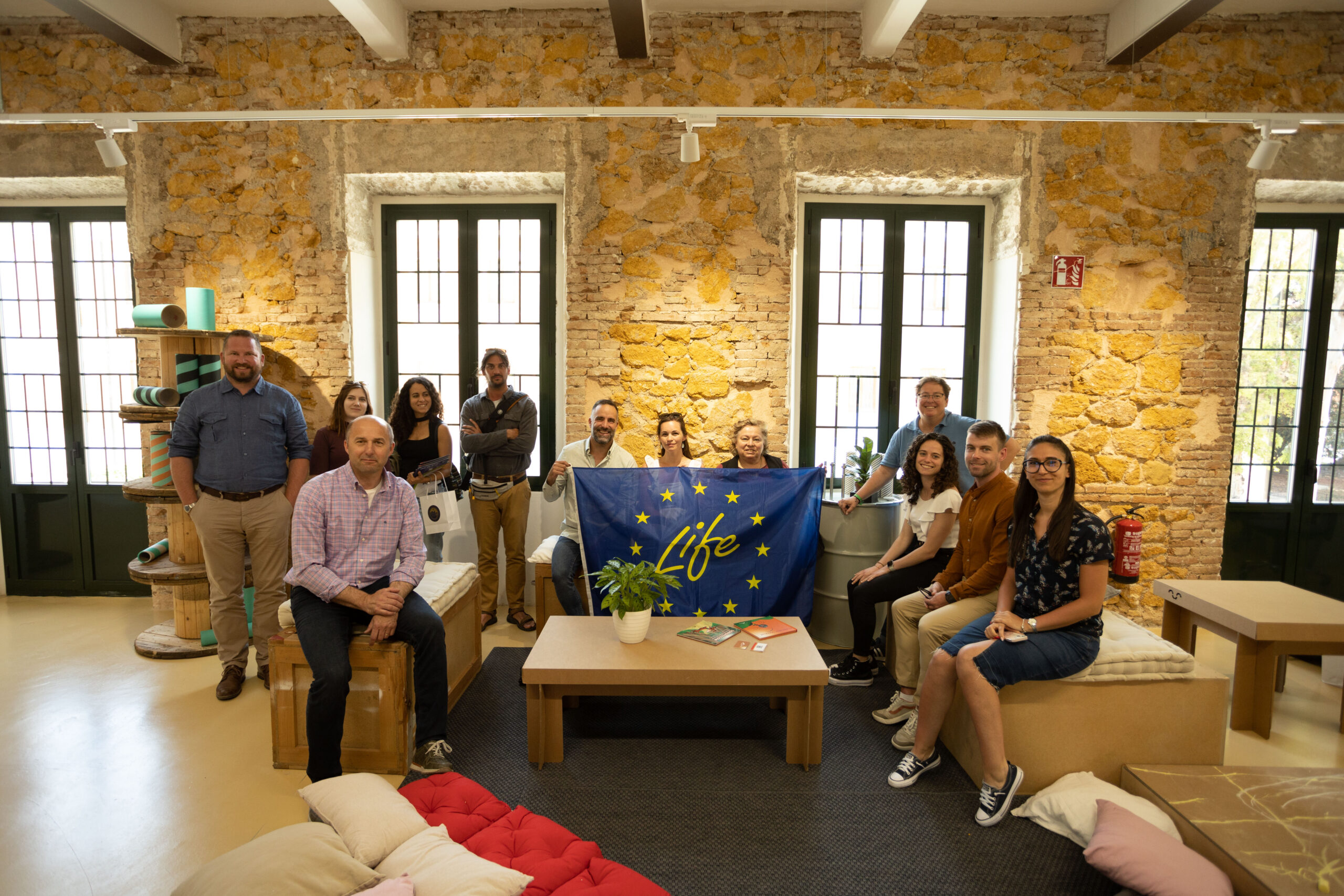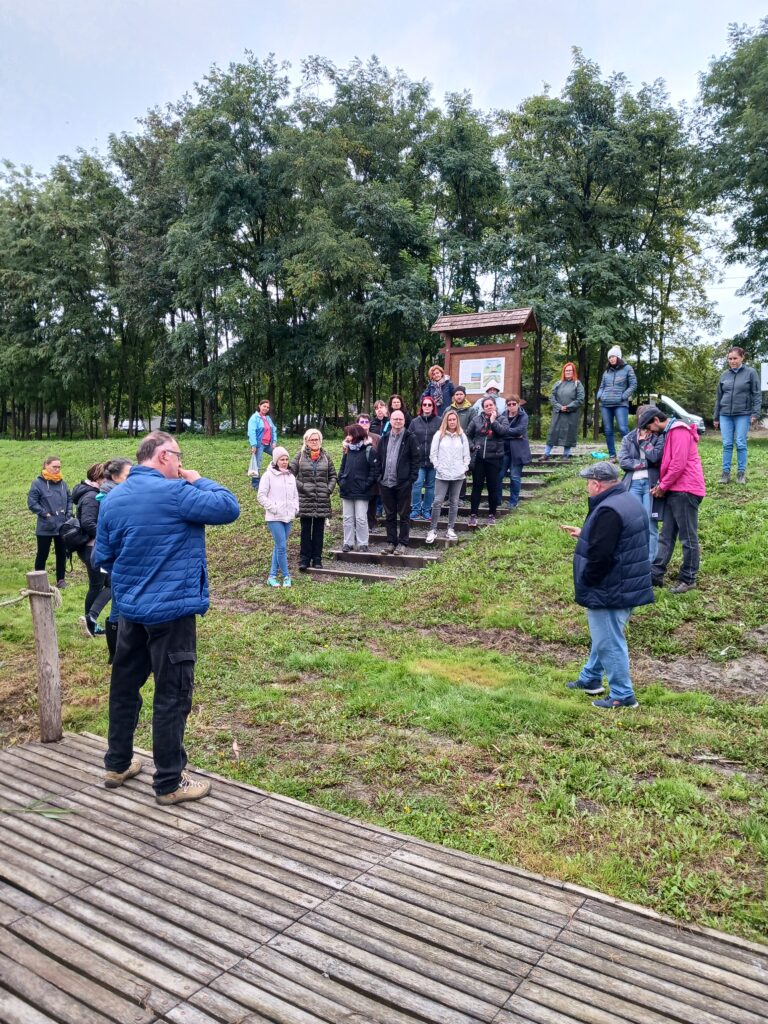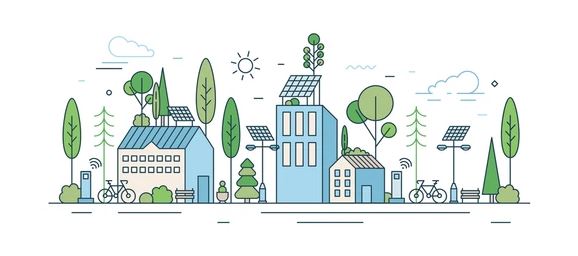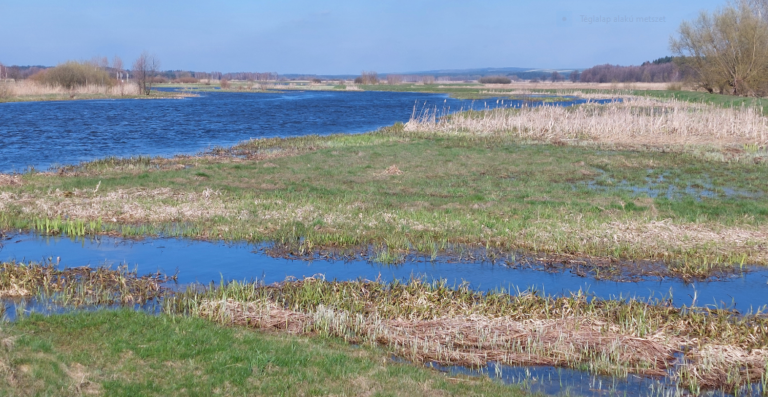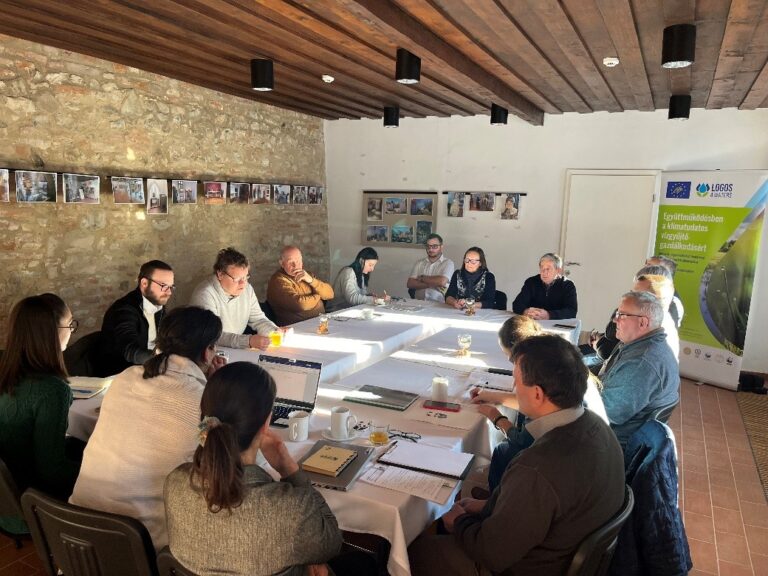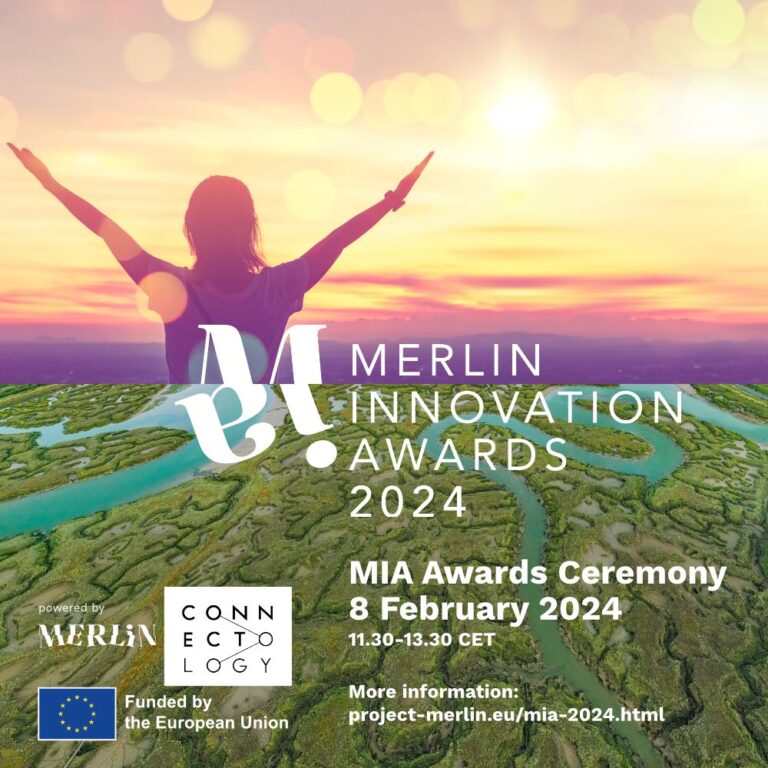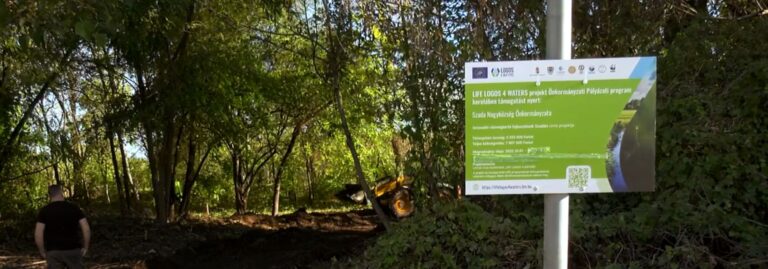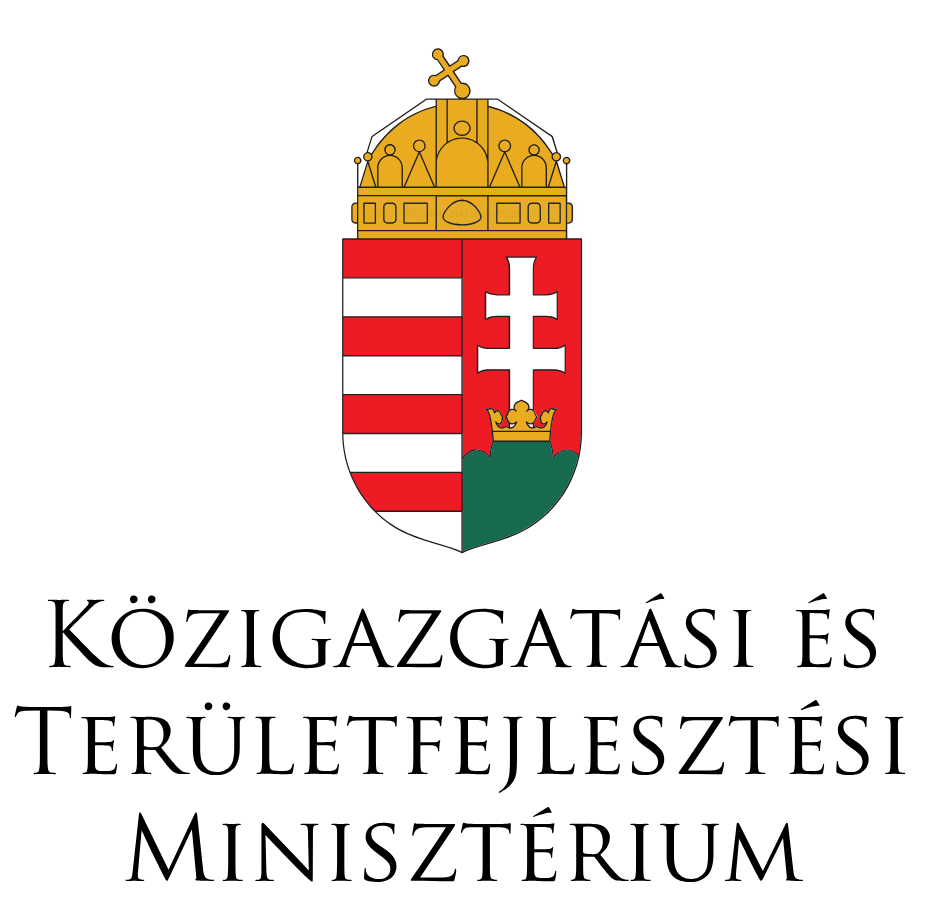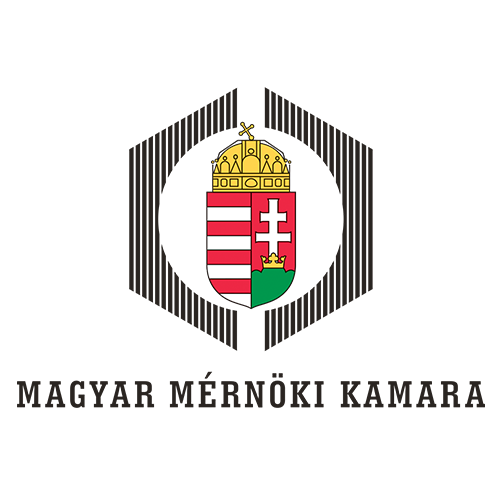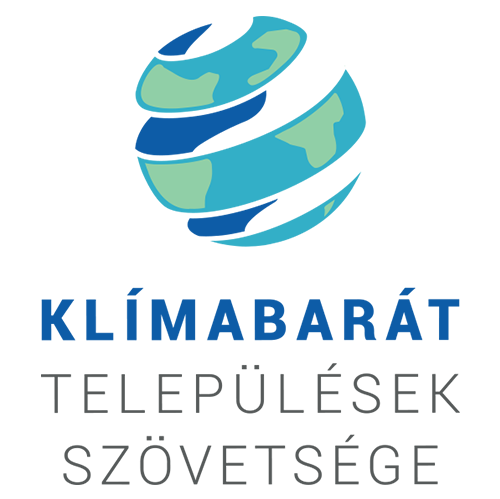Within the framework of the LIFE LOGOS 4 WATERS project „In cooperation for climate-conscious river basin management”, the first and second networking meeting took place between the 14th and 18th May 2023 in Spain. During the networking meeting, participants could get to know more about two LIFE projects; LIFE-ADAPTATE project (LIFE16 CCA/ES/000049) and LIFE HEATLAND project (LIFE16 CCA/ES/000077).
Three international networking meetings were planned in the LIFE LOGOS 4 WATERS project in total. Considering that the first two host organisations to be visited are located in Spain and the geographical distance between the project sites was relatively small, we decided to carry out the first two networking meetings together. This allowed us to reduce the Partnership’s carbon footprint by almost half, on the other hand this decision was more cost-effective. Three participants from the Coordinating Beneficiary and one-one person from each Partner Organisation could attend to the networking meeting. The networking meeting was an opportunity to get to know the visited projects and map the points of connections and the possible future cooperation opportunities. We approached the networking place by plane from Budapest to Alicante, from where there were possiblities to travel by bus or train to the project sites.
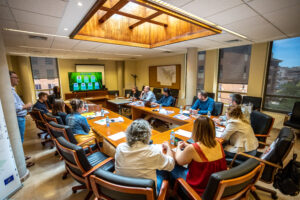
The LIFE-ADAPTATE project’s main site is Lorca, a town in south-east Spain with 93 thousand inhabitants. It is located in one of the most arid regions of Europe. LIFE ADAPTATE’s main objective was to contribute to improving climate policy and legislation at local level in the European Union, in line with the EU Strategy on adaptation to climate change and the 2030 climate and energy framework. The project targeted in particular, the process of design and implementation of local adaptation policies, their coordination with mitigation actions and the adaptation of local policies to meet climate change challenges. The coordination role of local governments can be considered as a main point of connection with the LIFE LOGOS 4 WATERS project. A project focused on six municipalities, three can be found in Spain (Águilas, Cartagena and Lorca), two in Portugal (Alfândega da Fé and Mértola) and one in Latvia (Smiltene). The main outcomes were the development and formal approval of Sustainable Energy and Climate Action Plans (SECAP), one for each participating municipality, the implementation of nine pilot actions in the area of climate change adaptation and mitigation, and the development or adaption of local regulations, especially those governing urban planning, in support of EU climate policy. These plans were based on local vulnerability assessment studies carried out during the project engaging the participation of the public.
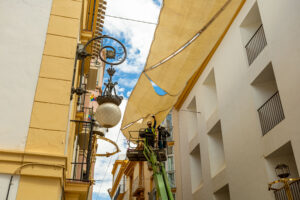
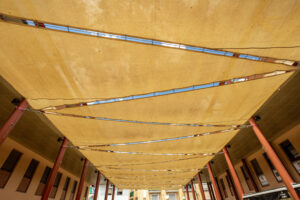
The municipality of Águilas lies next to Lorca, where the high demand for water has rapidly increased due to the sudden increase in population and the main economic activity of the inhabitants of the municipality, which is agriculture. Therefore, there is a great problem related scarcity of available water for the maintenance of wooded urban areas. The project aimed to issue this problem. Thus, one of the demonstration projects was carried out here, where a system has been designed to take advantage of the water resulting from the wastewater treatment plants for irrigation, which would otherwise be discharged into the sea.
The action starts in the water treatment plant located in Las Mascaras Street from where a pipeline flows to a water pump responsible to raise the treated water to two 35 m3 tanks using solar power, from where this water falls down (by gravity) to the wooded area, which is located at 1.3 km from the treatment plant.
At the networking meeting, first the LIFE LOGOS 4 WATERS project was presented by Dr. Petra Szatzker, Project Manager of LIFE L4W followed by Fruzsina Markó, Catchment Coordinator of the Municipality of Bátya and András Rakovics, Deputy Mayor of the Municipality of Püspökszilágy also presented the natural water retention interventions carried out in their municipalities. The LIFE-ADAPTATE project was presented at the Claustro del Convento de La Merced by Pedro Pepes and María Rosa, who are working on the project. During the presentations attendees could learn about the objectives of the project, the implemented activities, the achieved results. Following the presentations Rafael Ataz Gómez (Region of Murcia Development Institute) answered the questions and suggested a collaboration with the project’s partner in Latvia, where the weather conditions are similar to those in Hungary, he pointed out.
After the networking meeting and presentation of the projects, we had the opportunity to take a look at the “shadow corridors”, which have been created to enable pedestrians to walk around safer on the streets of the city centre, protected from the strong sunlight. The shadow corridors are made of permeable material so that the rainfall is not blocked.
As the second stop of the networking meeting the delegation of the LIFE LOGOS 4 WATERS project partnership traveled to the city of Murcia on 17 May, where they visit the LIFE HEATLAND project. Similarly, the LIFE LOGOS 4 WATERS project was presented by Dr. Petra Szatzker, Project Manager, and then also Fruzsina Markó, Catchment Coordinator of the Municipality of Bátya and András Rakovics, Deputy Mayor of the Municipality of Püspökszilágy presented the natural water retention interventions in their municipalities. The LIFE HEATLAND project was presented in a building constructed as part of another sustainability project in Murcia, which promotes the circular economy and waste recycling. In the auditorium, a large number of products could be found, that are no longer used by the companies, but could be used by children, students or other people working on creative projects.
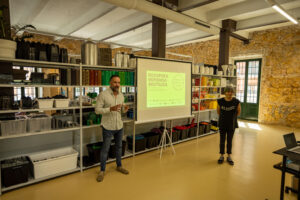
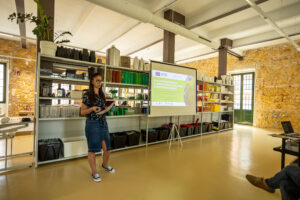
After looking around in the building, Lorena Fernández Seoane (Energy and Insulation Area, City Council of Murcia) and Manuel Valls Sevilla (City Council Murcia, Municipal Engineer) presented the LIFE HEATLAND project.
A LIFE HEATLAND project aims to reduce the urban heat island effect through innovative pavement elements and green roofs/cool roofs, nature-based solutions were also a part of this project. Murcia is also exposed to strong UV radiation for the main part of the year, so they implemented the use of cool pavement to reduce the urban heat island effect, as in municipalities around the world facing similar challenges. In addition, the residents also reported that noise pollution has been reduced by the innovative pavement, which has provided an unexpected additional value. The pavement replaces the traditional asphalt with a mixture of lime aggregated, transparent synthetic binder and titanium oxide and iron oxides pigments which makes it a lighter colour and less heat-absorbent. Four metering towers were installed fitted with diverse sensors (e.g. a pavement surface temperature sensor, three air temperature sensors, an ozone meter and a lux meter) in the city of Murcia. At the demonstration area, we were able to gain first-hand experience of the cool pavement’s effect.
The colleagues of LIFE HEATLAND project provided measuring equipments to test the temperature of the lighter-coloured cool pavement and the original pavement next to each other, which on the day of the visit – which was a less sunny day – resulted 8-9°C difference.
The delegation could also learn about other projects carried out in Murcia. The project that was introduced by Elena de Vincent (Aguas de Murcia), also aimed to adapt to the effects of climate change, such as the urban water treatment system. In the arid areas of Spain, there is a deficiency of precipitation, resulting in a water shortage, so there is no significant potential for rainwater retention, this way people are forced to put more emphasis on wastewater treatment and use the available grey water.
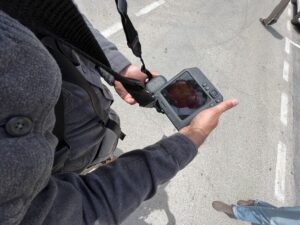

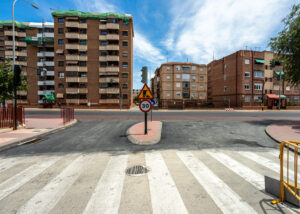
To summarise, during the networking visit, representatives of the project partners had the opportunity to get to know adaptation and mitigation strategies of two cities in South East Spain, which could be relevant in Hungary because, although there are still more precipitation in our country than in Spain, but the different climate scenarios, and studies based on the method of spatial analogy indicate that the climate in Hungary will be very similar by the climate change by the end of the century. Since Hungary is a country with a high water supply yet, it is important to continue to keep the water within our country’s borders in the coming years, thus preventing the drought and reduction of the quantity and quality of agricultural products. The cooperation of local governments, adaptation strategies at regional level, applying good practices from other countries can be considered as an example to be followed, which can reduce the vulnerability of Hungarian municipalities.
Photos were taken by Zoltán Szenek (General Directorate of Water Management)
Photos are available in the gallery page of the networking meeting.
